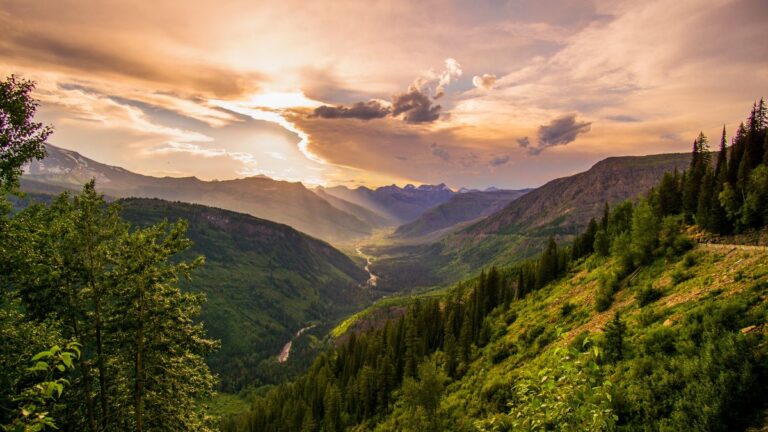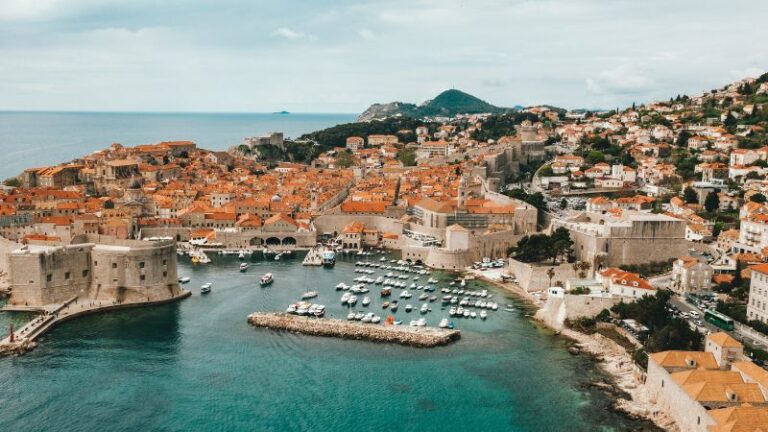40 Best Places Like Costa Rica
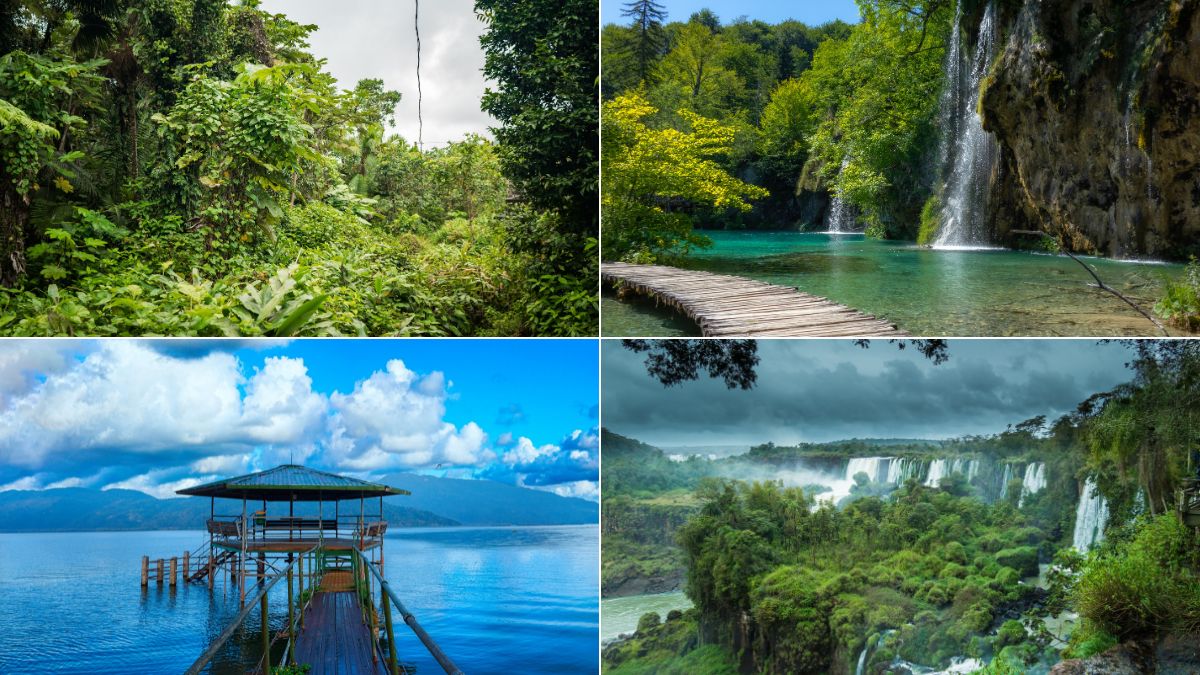
As participants in Amazon Associates and other programs, we earn from qualifying purchases. This comes at no additional cost to you. For more details, see our Affiliate Disclosure.
When it comes to natural beauty and biodiversity, Costa Rica is undoubtedly a top destination, its lush rainforests, stunning beaches, and exotic wildlife drawing in millions of travelers each year. However, if you’ve already explored Costa Rica’s enchanting landscape, or perhaps you’re just keen to discover locales with similar appeal but off the beaten path, there are many other destinations around the globe offering the same allure of ecotourism, adventure, and tranquility.
In this article, we’ll journey through some of the best alternative places like Costa Rica, perfect for those craving a taste of the wild with a side of serenity.
Places Like Costa Rica In The US
The United States, with its diverse landscapes and distinct biomes, offers several destinations reminiscent of Costa Rica’s natural wonders. The Everglades in Florida and Olympic National Park in Washington mirror Costa Rica’s rich biodiversity and abundance of outdoor activities.
The tropical charm of Hawaii’s Big Island, the lush landscapes of the Smoky Mountains National Park, and the towering majesty of California’s Redwood National and State Parks further echo Costa Rica’s blend of coastal and forest environments. Each location reflects a facet of Costa Rica’s unique ecological allure, from dense rainforests and stunning coasts to diverse wildlife and a spirit of adventure.
The Everglades, Florida
The Everglades in Florida is a remarkable ecosystem and one of the most unique regions in the United States. Known for its expansive wetlands, the Everglades hosts a wealth of biodiversity, featuring over 1,000 species of plants, and hundreds of bird, fish, and mammal species, many of which are endangered.
It’s a place that closely mirrors the varied ecosystems seen in Costa Rica, particularly the Tortuguero National Park known for its distinct wetland ecology. Like Costa Rica, the Everglades offers an array of eco-tours – from airboat rides that whizz through the marshes to bird watching tours.
Just as in Costa Rica, conservation is a big focus in the Everglades, with efforts centered around protecting and preserving the unique ecology. Though the flora and fauna differ from what you would see in Costa Rica, the Everglades presents the same sense of exploration and discovery.
With subtropical wilderness, extensive wildlife spotting opportunities, and a wealth of natural beauty, the Everglades definitely makes a compelling alternative for those seeking a Costa Rica-like experience within the United States.
Olympic National Park, Washington
A diverse mix of ecosystems awaits in Washington’s Olympic National Park, an area encompassing almost a million acres. The park boasts temperate rainforests, rugged mountain terrain, and untouched Pacific coastline, echoing the variety seen within Costa Rica’s boundaries.
Much like exploring the diverse landscapes of Costa Rica – from the cloud forests of Monteverde to the beaches of Manuel Antonio – a journey through Olympic National Park is an exploration of contrasting environments.
Wildlife enthusiasts will find parallels between Olympic National Park and Costa Rica, with the former home to mountain goats, black bears, and myriad bird species, offering its own version of wildlife-spotting adventures. While Olympic’s temperate rainforests, with moss-draped trees and fern-filled understories, may not house monkeys or sloths, they emanate a sense of tranquility akin to Costa Rica’s verdant jungles.
For those who appreciate Costa Rica’s dedication to preserving natural spaces, Olympic National Park’s commitment to protection and sustainability is sure to resonate.
Big Island, Hawaii
Hawaii’s Big Island, the largest in the U.S. state, is a hub of natural beauty and biodiversity, closely mirroring the allure of Costa Rica. From the sun-soaked beaches to the dense rainforests, and from the active volcanoes to the rich marine life, the Big Island is a microcosm of Costa Rica’s diverse landscapes.
It echoes the thrill of Costa Rica’s Arenal Volcano with its own Kilauea Volcano, one of the most active volcanoes on Earth, and offers a comparable beach and surfing culture to Costa Rica’s famed Pacific and Caribbean coasts.
While Big Island doesn’t boast the same breadth of species as Costa Rica, it offers its own unique flora and fauna. From the native Hawaiian honeycreepers flitting through the forests to the manta rays gliding beneath the waves off the Kona coast, the opportunities for wildlife encounters are abundant.
The Big Island also shares Costa Rica’s commitment to environmental preservation, making it a haven for eco-conscious travelers.
Smoky Mountains National Park, Tennessee and North Carolina
The Smoky Mountains National Park, straddling the border between Tennessee and North Carolina, offers a different, yet equally captivating, nature-focused destination. The park is known for its rolling mountains, verdant forests, and the ethereal blue mist that gives the area its name – a unique characteristic reminiscent of the mystical cloud forests of Monteverde in Costa Rica.
Just as Costa Rica’s landscapes vary from Pacific beaches to Caribbean plantations, the Smokies present an array of environments, from the hardwood forests at lower elevations to the spruce-fir “islands” atop the mountains.
While the Smoky Mountains can’t match Costa Rica’s tropical biodiversity, they host an impressive range of wildlife, including black bears, white-tailed deer, and over 200 species of birds. The park’s approach to conservation and sustainability echoes Costa Rica’s own efforts.
Both places share an emphasis on environmental education and responsible tourism. In essence, the Smoky Mountains National Park captures the essence of Costa Rica’s love for nature, albeit in a temperate setting.
Redwood National and State Parks, California
California’s Redwood National and State Parks, home to the world’s tallest trees, offer an experience steeped in awe and tranquility that rivals the grandeur of Costa Rica’s most impressive natural attractions.
Walking among the towering redwoods, some of which reach heights of over 350 feet, can invoke a sense of wonder similar to that experienced when navigating Costa Rica’s dense rainforests. The parks, much like Costa Rica’s reserves, are dedicated to preserving these giant trees and the unique ecosystem they support.
Although Redwood National and State Parks may not offer the same level of biodiversity as Costa Rica, the area is rich with wildlife, including Roosevelt elk, various bird species, and a variety of marine life along its protected coastline. Like the tranquil canals of Costa Rica’s Tortuguero National Park, the parks feature pristine rivers and streams providing vital habitats for salmon and other species.
Overall, while the landscapes differ, both the Redwood Parks and Costa Rica offer visitors the chance to connect deeply with nature and understand the importance of conservation.
Places Like Costa Rica In Europe
Europe may be geographically distant from Costa Rica, but it still hosts destinations that capture elements of Costa Rica’s unique appeal. Croatia’s Plitvice Lakes National Park, Germany’s Black Forest, and Spain’s Costa Verde echo Costa Rica’s lush green landscapes and diverse ecosystems.
Portugal’s Madeira and the Azores offer a combination of rich biodiversity, dramatic landscapes, and adventurous activities reminiscent of Costa Rica. Despite their continental differences, these European destinations encapsulate aspects of Costa Rica’s enchanting natural beauty and commitment to conservation.
Plitvice Lakes National Park, Croatia
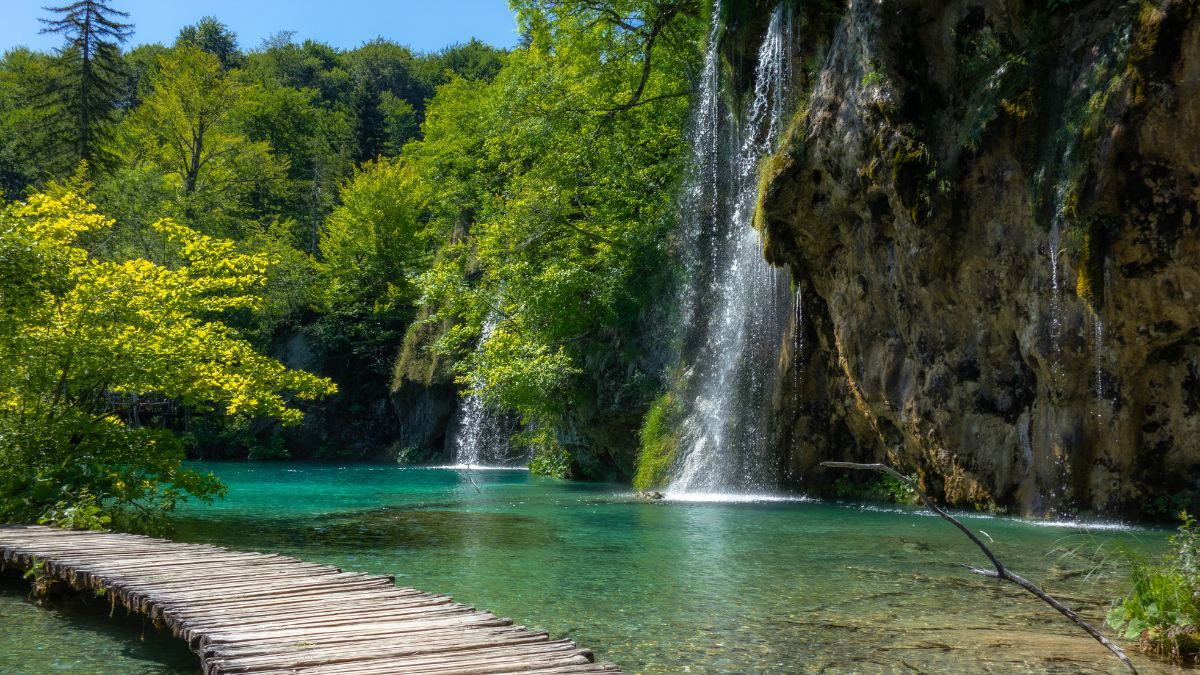
Croatia’s Plitvice Lakes National Park, with its spectacular waterfalls and pristine lakes, offers a unique and captivating natural experience reminiscent of Costa Rica’s enchanting landscapes. This UNESCO World Heritage Site is home to 16 terraced lakes, interconnected by waterfalls and cascades, evoking images of Costa Rica’s La Fortuna waterfall and the blue cascades of Rio Celeste.
The lush forests surrounding the lakes are teeming with wildlife, including wolves, brown bears, and over 120 species of birds, lending a sense of diversity that’s comparable to Costa Rica’s rich biodiversity. Walking along the wooden paths and exploring the caves in Plitvice can be as thrilling as a trek through the Costa Rican rainforests.
Despite the geographical and climatic differences, both Plitvice and Costa Rica share a commitment to preserving natural beauty and providing immersive, unforgettable experiences for nature lovers.
The Black Forest, Germany
Germany’s Black Forest, with its dense woodlands, crystal-clear lakes, and rolling hills, offers a sense of tranquillity and natural beauty that can rival the appeal of Costa Rica’s lush landscapes. While it lacks the tropical flair of Costa Rica, the Black Forest offers a distinct charm with its thick firs and spruces, similar to Costa Rica’s cloud forests.
The Black Forest is a haven for wildlife including lynxes, wolves, and numerous bird species. While this fauna is different from Costa Rica’s, the Black Forest provides a sense of exploration and discovery that eco-tourists often seek in Costa Rica.
Moreover, similar to Costa Rica’s ecotourism ethos, the Black Forest emphasizes sustainable travel and respect for nature. Thus, while the environments differ, both places offer a sense of escape and connection with the natural world.
Madeira, Portugal
The autonomous region of Madeira, Portugal, with its rugged mountains, lush gardens, and stunning ocean views, shares Costa Rica’s allure of natural beauty and adventure. Similar to Costa Rica’s diverse landscapes, Madeira offers a range of environments from its dramatic coastline to its forested interiors, particularly the Laurissilva Forest, a UNESCO World Heritage site.
The flora and fauna of Madeira, though distinct from Costa Rica, is equally captivating. The island is home to unique species such as the Madeira firecrest and Trocaz pigeon. Its commitment to preserving its unique ecosystem echoes Costa Rica’s own environmental efforts.
From levada walks (guided hikes along irrigation channels) that rival Costa Rica’s rainforest treks to dolphin and whale watching experiences akin to those found on Costa Rica’s coasts, Madeira offers a unique European alternative to Costa Rica’s offerings.
Costa Verde, Spain
Spain’s Costa Verde, or “Green Coast,” is known for its verdant landscapes, beautiful beaches, and mountainous backdrop, reminiscent of the varied terrains found in Costa Rica. This coastline offers a tranquil escape and has been largely preserved from the overdevelopment often seen in beach destinations. The emphasis on preservation mirrors Costa Rica’s commitment to sustainability.
While the wildlife may differ, Costa Verde’s coastline is home to diverse marine life, and its lush hinterlands host a variety of bird species. Costa Verde’s Camino de Santiago trails offer trekking experiences that can match the adventure of Costa Rica’s cloud forest excursions. The commitment to preserving natural landscapes, the beautiful coasts, and the spirit of adventure make Costa Rica and Costa Verde akin in many ways.
The Azores, Portugal
The Azores, a group of nine volcanic islands in the Atlantic Ocean, boasts an array of natural wonders that can rival those of Costa Rica. With lush landscapes, dramatic volcanic peaks, and an abundance of marine life, the Azores offer a similar appeal to nature lovers and adventure seekers. The islands’ geothermal hot springs and volcanoes echo the thermal baths and volcanoes of Costa Rica.
The Azores are a biodiversity hotspot with unique flora and fauna, including many endemic species. Similar to Costa Rica, the Azores has a strong emphasis on conservation and sustainable tourism, with a considerable portion of the land designated as nature reserves.
The islands also offer fantastic opportunities for whale and dolphin watching, comparable to those found on Costa Rica’s Pacific coast. Despite their differences, both the Azores and Costa Rica offer visitors a myriad of natural wonders and a commitment to preservation and sustainable tourism.
Places Like Costa Rica In Asia
Asia offers an array of destinations that can rival Costa Rica’s natural beauty and rich biodiversity. Thailand’s Khao Sok National Park, the rainforests of Borneo in Indonesia, and Yala National Park in Sri Lanka echo Costa Rica’s dense green landscapes and exotic wildlife.
The untouched beauty of Palawan in the Philippines and the Western Ghats in India further mirror Costa Rica’s commitment to preserving nature’s grandeur. These Asian destinations share Costa Rica’s ethos of biodiversity conservation, sustainable tourism, and natural wonder, offering memorable experiences for the nature-loving traveler.
Khao Sok National Park, Thailand
With its dramatic limestone peaks, dense jungles, and crystal-clear lakes, Khao Sok National Park in Thailand offers a tropical experience that rivals the allure of Costa Rica. Comparable to the biodiversity of Costa Rica’s Corcovado National Park, Khao Sok is a haven for a variety of wildlife, including Malayan sun bears, Asian elephants, and over 180 bird species.
Adventures in Khao Sok often revolve around exploring the stunning Cheow Lan Lake by canoe or bamboo raft, evoking the same sense of thrill as navigating the canals of Costa Rica’s Tortuguero National Park. Both destinations place a strong emphasis on eco-tourism and conservation. Whether it’s spotting exotic animals, exploring cave systems, or hiking in lush jungles, Khao Sok offers a similar wealth of natural treasures and outdoor activities as Costa Rica.
Palawan, Philippines
Often hailed as one of the world’s most beautiful islands, Palawan in the Philippines offers a blend of stunning beaches, crystal-clear waters, and incredible biodiversity, much like Costa Rica. It’s home to two UNESCO World Heritage Sites: the Puerto-Princesa Subterranean River National Park and the Tubbataha Reefs Natural Park, which mirror the ecological importance of Costa Rica’s protected areas.
With its endemic species, lush landscapes, and commitment to preservation, Palawan reflects Costa Rica’s eco-conscious spirit. Both places offer a blend of relaxation and adventure, from diving and snorkeling among vibrant marine life to trekking through dense forests. Palawan’s thriving eco-tourism scene, emphasis on conservation, and wealth of natural beauty make it a fitting alternative to Costa Rica.
Yala National Park, Sri Lanka
Yala National Park, the second-largest national park in Sri Lanka, offers a wildlife experience akin to Costa Rica’s top reserves. It’s renowned for its density of leopards, as well as its elephant population, mirroring the thrill of spotting jaguars and tapirs in Costa Rica’s national parks. Its coastal location, with adjacent beaches, also parallels Costa Rica’s blend of wilderness and coastlines.
Much like in Costa Rica, eco-tourism in Yala is a delicate balance of facilitating wildlife sightings and preserving natural habitats. The park’s scrub plains, jungles, and lagoons create diverse habitats, echoing the varied ecosystems of Costa Rica. From thrilling wildlife safaris to tranquil moments on deserted beaches, Yala National Park offers a blend of experiences that resonate with the charms of Costa Rica.
Borneo Rainforest, Indonesia
Indonesia’s Borneo Rainforest is one of the oldest in the world and offers a unique alternative to Costa Rica. With its rich biodiversity, including orangutans, clouded leopards, and over 200 bird species, the experiences in Borneo can be as awe-inspiring as a journey through Costa Rica’s rainforests.
River cruises in Borneo, particularly in the Kinabatangan Wildlife Sanctuary, mirror the boat tours in Costa Rica’s Tortuguero National Park, each offering intimate encounters with wildlife in their natural habitats. The commitment to conserving the rainforest and its inhabitants aligns with Costa Rica’s ethos of preservation and sustainability. Despite the geographical distance and species variation, both destinations offer the appeal of exploring some of the world’s most biodiverse and ecologically significant landscapes.
The Western Ghats, India
The Western Ghats, a mountain range running parallel to the western coast of India, is a UNESCO World Heritage Site known for its high biological diversity and endemic species. This hotspot of biodiversity matches the rich natural tapestry of Costa Rica’s diverse ecosystems. The Ghats’ verdant forests, scenic waterfalls, and rich fauna echo the stunning landscapes of Costa Rica.
The Western Ghats, home to numerous national parks and wildlife sanctuaries, is the habitat of elephants, tigers, and a wealth of bird species. This mirrors Costa Rica’s extensive wildlife. Both regions are known for their eco-tourism initiatives and conservation efforts aimed at preserving their unique ecosystems. The Western Ghats, like Costa Rica, provide nature enthusiasts with an unforgettable exploration of some of the planet’s most diverse flora and fauna.
Places Like Costa Rica In Africa
Africa, with its vast landscapes and diverse ecosystems, hosts several destinations that capture the essence of Costa Rica’s appeal. The Bwindi Impenetrable National Park in Uganda, Madagascar’s rainforests, and the Okavango Delta in Botswana reflect the biodiversity and unique landscapes found in Costa Rica.
Virunga National Park in the Democratic Republic of the Congo and Ethiopia’s Simien Mountains National Park offer wildlife encounters and stunning vistas that mirror Costa Rica’s natural allure. Each of these African destinations carries the shared spirit of conservation, biodiversity, and exploration that makes Costa Rica so enticing.
Bwindi Impenetrable National Park, Uganda
Uganda’s Bwindi Impenetrable National Park, a UNESCO World Heritage Site, offers an incredible diversity of flora and fauna, somewhat akin to Costa Rica’s biodiversity. Although the species vary greatly, the sense of exploration and discovery in Bwindi mirrors that of Costa Rica’s reserves. The most notable experience here is tracking mountain gorillas, a thrilling encounter that rivals Costa Rica’s wildlife experiences.
Bwindi’s dense forest habitat is rich with different species of trees, ferns, birds, and butterflies. The park’s eco-tourism and conservation efforts echo Costa Rica’s sustainable initiatives, aiming to protect the unique species that inhabit these lands. Despite the different ecosystems and fauna, Bwindi Impenetrable National Park shares Costa Rica’s commitment to safeguarding nature and offering unforgettable wildlife encounters.
Madagascar Rainforest
The rainforests of Madagascar, home to a staggering array of unique species, offer an exotic alternative to Costa Rica. Like Costa Rica, Madagascar is renowned for its biodiversity, with over 90% of its wildlife found nowhere else on Earth. This includes an impressive variety of lemurs, chameleons, and bird species.
The conservation areas of Madagascar, such as the UNESCO World Heritage-listed Rainforests of the Atsinanana, reflect Costa Rica’s protected areas’ commitment to preserving biodiversity. Despite Madagascar’s unique fauna and flora, the spirit of exploring a rich, biodiverse environment and the commitment to conservation parallels that of Costa Rica, making it an intriguing alternative for nature enthusiasts.
Okavango Delta, Botswana
Botswana’s Okavango Delta, a unique inland delta and a UNESCO World Heritage Site, offers an array of experiences that can rival Costa Rica’s diverse offerings. With its rich wildlife, including elephants, lions, and African wild dogs, safaris in the Okavango Delta provide a thrill comparable to wildlife spotting in Costa Rica.
The delta’s mokoro (dug-out canoe) trips offer a sense of adventure and exploration similar to boating tours in Costa Rica’s national parks. Both regions place a high emphasis on conservation and offer the chance to experience diverse ecosystems firsthand. While the species and landscapes may differ significantly, the Okavango Delta shares Costa Rica’s celebration of nature and wildlife, offering a captivating alternative for eco-tourists.
Virunga National Park, Democratic Republic of the Congo
Virunga National Park in the Democratic Republic of the Congo, Africa’s oldest national park and a UNESCO World Heritage Site, echoes Costa Rica’s abundant natural treasures. With its active volcanoes, snow-capped peaks, and diverse wildlife, including the critically endangered mountain gorillas, Virunga offers a sense of adventure akin to exploring Costa Rica’s varied landscapes.
Despite the different ecosystems, the commitment to conservation is a common thread between Virunga and Costa Rica’s protected areas. Virunga’s dedication to protecting its unique biodiversity and supporting local communities mirrors Costa Rica’s focus on sustainable tourism. Both destinations offer extraordinary encounters with nature and a shared dedication to preserving these invaluable ecosystems for future generations.
Simien Mountains National Park, Ethiopia
Ethiopia’s Simien Mountains National Park, with its dramatic landscapes, rugged peaks, and unique wildlife, presents a unique alternative to Costa Rica. Although the environments differ, the sense of exploration and discovery found in the Simien Mountains can be compared to hiking Costa Rica’s cloud forests or volcanic ranges.
The park is home to several endemic species, including the gelada baboon and the Ethiopian wolf. Its stunning views and trekking routes provide a sense of adventure comparable to Costa Rica’s hiking trails. Both destinations place significant emphasis on preserving their unique environments and biodiversity. While the species and landscapes may differ, the shared ethos of conservation and adventure make Simien Mountains National Park a noteworthy alternative to Costa Rica.
Places Like Costa Rica In Australia
Australia offers numerous destinations that mirror aspects of Costa Rica’s natural appeal. The ancient rainforests of Daintree in Queensland, the marine biodiversity of the Great Barrier Reef, and the rugged landscapes of Tasmania’s Wilderness World Heritage Area echo Costa Rica’s diverse ecosystems and outdoor adventure offerings.
The unique wildlife on Kangaroo Island and the varied landscapes of Kakadu National Park in Northern Territory further resonate with Costa Rica’s wildlife diversity and commitment to conservation. These Australian destinations encapsulate the essence of Costa Rica’s natural beauty, diverse ecosystems, and eco-conscious approach to tourism.
Daintree Rainforest, Queensland
Queensland’s Daintree Rainforest, one of the oldest rainforests in the world, presents a rich natural experience that matches the allure of Costa Rica. Much like Costa Rica’s Monteverde Cloud Forest, Daintree is a biodiversity hotspot, home to numerous unique species, including the cassowary, a large flightless bird, and the prehistoric-looking Boyd’s forest dragon.
Experiences in the Daintree include exploring the lush forest, taking river cruises to spot crocodiles, and immersing in the indigenous culture, comparable to the variety of experiences Costa Rica offers. Both destinations share a focus on ecotourism and conservation, making Daintree Rainforest a compelling Australian counterpart to Costa Rica’s lush landscapes.
The Great Barrier Reef, Queensland
The Great Barrier Reef, the world’s largest coral reef system, shares Costa Rica’s wealth of marine biodiversity. While Costa Rica is renowned for its Pacific and Caribbean coasts, the Great Barrier Reef boasts a marine ecosystem of comparable richness, with an array of colourful corals, fishes, turtles, and sharks.
Snorkelling and diving in the Great Barrier Reef can be as thrilling as exploring the underwater wonders off Costa Rica’s coasts. Both destinations prioritize the protection of their unique marine environments and promote sustainable tourism practices. Despite the differences in geography, the Great Barrier Reef and Costa Rica share a commitment to showcasing nature’s underwater splendour.
Kangaroo Island, South Australia
Kangaroo Island, known as Australia’s Galapagos, offers an array of wildlife experiences that can rival those of Costa Rica. Home to kangaroos, koalas, sea lions, and a variety of bird species, this island provides wildlife encounters reminiscent of Costa Rica’s rich biodiversity.
The island’s varied landscapes, from its rugged cliffs to its secluded beaches, mirror Costa Rica’s diverse terrains. Both destinations share a commitment to preserving their natural environments and promoting responsible wildlife interactions. Though the species differ, the spirit of exploring unique wildlife in their natural habitats is a shared attribute between Kangaroo Island and Costa Rica.
Tasmania’s Wilderness World Heritage Area
Tasmania’s Wilderness World Heritage Area, covering almost 20% of the island, presents a unique and rugged alternative to Costa Rica’s lush landscapes. The area comprises various national parks and reserves, including the renowned Cradle Mountain-Lake St Clair National Park, and offers a range of environments from temperate rainforests to alpine heaths.
While the flora and fauna are distinct from Costa Rica’s, the sense of adventure and exploration in Tasmania’s wilderness parallels the experiences in Costa Rica’s national parks. Both destinations emphasize conservation and offer rich biodiversity, stunning landscapes, and a wealth of outdoor activities, making Tasmania’s Wilderness World Heritage Area an intriguing contrast to Costa Rica.
Kakadu National Park, Northern Territory
Kakadu National Park in the Northern Territory, Australia’s largest national park, offers a wide variety of landscapes and wildlife that echo Costa Rica’s rich natural offerings. The park’s diverse ecosystems, from its wetlands to its rocky escarpments, teem with wildlife, including saltwater crocodiles and a plethora of bird species.
Experiences in Kakadu can include hiking, wildlife spotting, exploring ancient rock art sites, and cruising down the yellow waters billabong, offering a sense of adventure similar to exploring Costa Rica’s diverse terrains and cultures. Both Kakadu and Costa Rica emphasize the protection of their natural and cultural heritage, providing travellers with a rich, immersive experience of the land and its history.
Places Like Costa Rica In Central America (besides Costa Rica itself)
Central America, despite being home to Costa Rica, hosts several other destinations that capture similar allure. Guatemala’s Tikal National Park and Nicaragua’s Ometepe Island mirror Costa Rica’s blend of rich cultural history and natural beauty. Belize’s Cockscomb Basin Wildlife Sanctuary and Honduras’s Monteverde offer a biodiversity that’s akin to Costa Rica’s reserves.
Additionally, Coiba National Park in Panama offers a marine biodiversity that rivals Costa Rica’s coasts. These destinations reflect the region’s shared commitment to sustainable tourism, wildlife conservation, and cultural richness, making them appealing alternatives to Costa Rica.
Tikal National Park, Guatemala
Tikal National Park in Guatemala, a UNESCO World Heritage Site, shares Costa Rica’s rich cultural history and natural beauty. It’s renowned for its impressive Mayan ruins, which offer a cultural exploration comparable to Costa Rica’s pre-Columbian heritage sites.
Nestled within the rainforest, Tikal also provides abundant wildlife spotting opportunities, with monkeys, jaguars, and numerous bird species inhabiting the area. Like Costa Rica’s national parks, Tikal promotes sustainable tourism practices and is dedicated to conserving its unique cultural and natural resources. This blend of ancient human history and biodiversity make Tikal a compelling alternative to Costa Rica.
Ometepe Island, Nicaragua
Ometepe Island in Nicaragua, formed by two joined volcanoes rising from Lake Nicaragua, offers landscapes that are reminiscent of Costa Rica’s varied topography. The island’s lush forests, rich wildlife, and local farming communities echo Costa Rica’s rural charm and biodiversity.
The island is a haven for outdoor activities, from hiking up the volcanoes and kayaking through the Istian Wetlands, to exploring pre-Columbian petroglyphs, all of which mirror the diversity of experiences available in Costa Rica. The commitment to community-led tourism on Ometepe also parallels Costa Rica’s ethos of sustainable tourism, making it an appealing Central American alternative.
Cockscomb Basin Wildlife Sanctuary, Belize
Cockscomb Basin Wildlife Sanctuary in Belize, renowned as the world’s first jaguar reserve, shares Costa Rica’s commitment to wildlife conservation. It’s a haven for bird watchers, with over 300 species recorded, and offers a biodiversity that’s akin to Costa Rica’s reserves.
Nature trails winding through the sanctuary’s lush forests offer similar experiences to trekking in Costa Rica’s national parks, with opportunities to spot not just jaguars but also pumas, ocelots, and tapirs. The dedication to preserving the wildlife and their habitats aligns with Costa Rica’s conservation efforts, making Cockscomb Basin a fitting choice for nature enthusiasts seeking similar experiences to those in Costa Rica.
Monteverde, Honduras
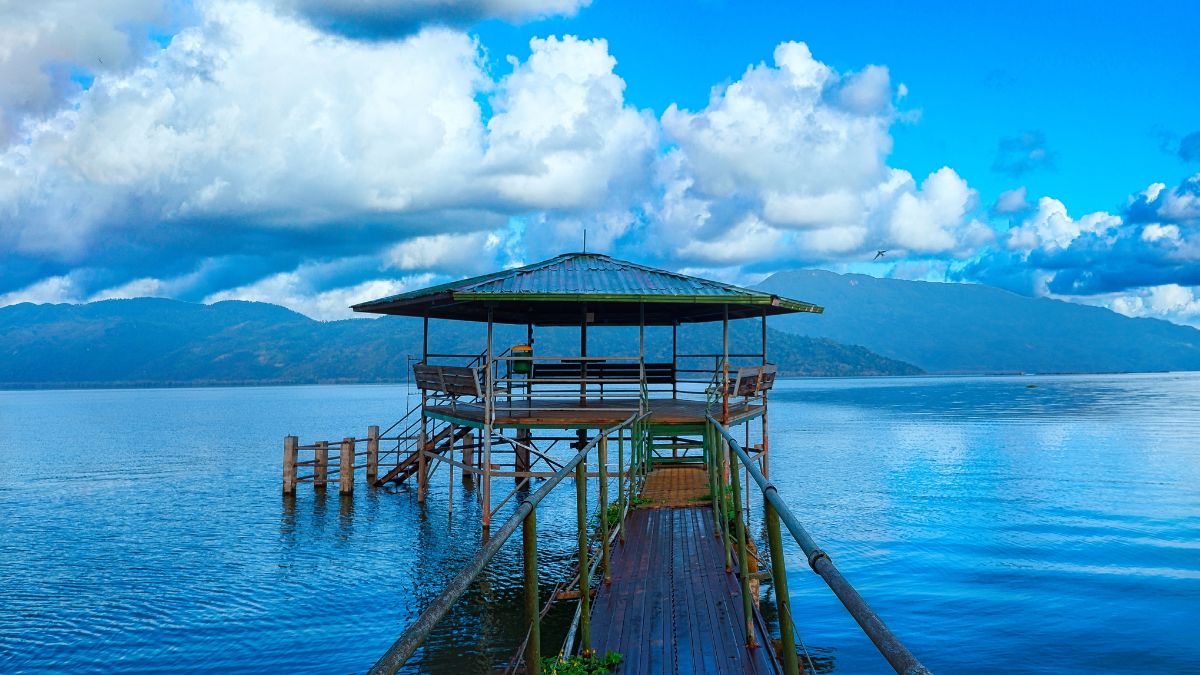
Monteverde, in the Olancho Department of Honduras, shares Costa Rica’s lush, mountainous landscapes. Its name, meaning “green mountain,” reflects its abundant natural beauty, which is comparable to Costa Rica’s verdant terrains.
The region’s forests, rivers, and waterfalls offer an array of outdoor activities, from hiking and birdwatching to rafting, that echo the adventures available in Costa Rica’s national parks. The commitment to preserving these natural resources and promoting sustainable tourism practices is another shared characteristic with Costa Rica, making Monteverde, Honduras, a natural alternative within Central America.
Coiba National Park, Panama
Coiba National Park in Panama, a UNESCO World Heritage Site, offers a marine biodiversity that rivals Costa Rica’s coasts. The park, encompassing the largest island in Central America and numerous surrounding islets, is renowned for its abundant marine life, including whales, dolphins, and various tropical fish species.
Snorkelling and diving experiences in Coiba can be as thrilling as exploring the underwater world off Costa Rica’s shores. The park’s forests also host diverse bird and mammal species, adding to the biodiversity. With its emphasis on marine conservation and biodiversity, Coiba National Park shares Costa Rica’s dedication to protecting natural treasures and offers a similar blend of land and sea experiences.
Places Like Costa Rica In South America
South America, with its diverse landscapes and ecosystems, offers several locations that reflect the essence of Costa Rica. The vast Amazon Rainforest in Brazil, Ecuador’s unique Galápagos Islands, and the striking Iguazu Falls straddling Argentina and Brazil mirror Costa Rica’s rich biodiversity and awe-inspiring natural spectacles.
Colombia’s Los Nevados National Natural Park and Brazil’s Pantanal further reflect Costa Rica’s commitment to environmental preservation and eco-tourism. Despite the differences in scale and landscapes, these South American destinations carry the spirit of biodiversity, natural wonder, and conservation that is central to Costa Rica’s appeal.
The Amazon Rainforest, Brazil
The Amazon Rainforest, often referred to as the “lungs of the Earth,” offers a rich biodiversity that parallels Costa Rica’s. Covering a vast portion of Brazil and extending into several other South American countries, the Amazon hosts an incredible array of wildlife, including jaguars, caimans, and a myriad of bird and insect species.
The dense rainforest, meandering rivers, and indigenous communities in the Amazon provide a sense of adventure and exploration similar to Costa Rica’s lush landscapes. Both destinations are at the forefront of conservation efforts, striving to preserve their unique ecosystems and promote sustainable tourism. Despite the Amazon’s grander scale, the shared essence of biodiversity and conservation makes it a noteworthy alternative to Costa Rica.
Galápagos Islands, Ecuador
The Galápagos Islands in Ecuador offer an unparalleled wildlife experience that can rival that of Costa Rica. Known for the unique species that inspired Charles Darwin’s theory of evolution, the Galápagos Islands host a variety of animals, including giant tortoises, marine iguanas, and various bird species, many of which can be seen nowhere else on Earth.
Just as in Costa Rica, encounters with wildlife in their natural habitats are a central part of the Galápagos experience. The islands’ conservation efforts and commitment to sustainable tourism are comparable to Costa Rica’s eco-friendly approach. With its unique fauna and emphasis on preservation, the Galápagos Islands are an intriguing alternative to Costa Rica for wildlife lovers.
Iguazu Falls, Argentina/Brazil
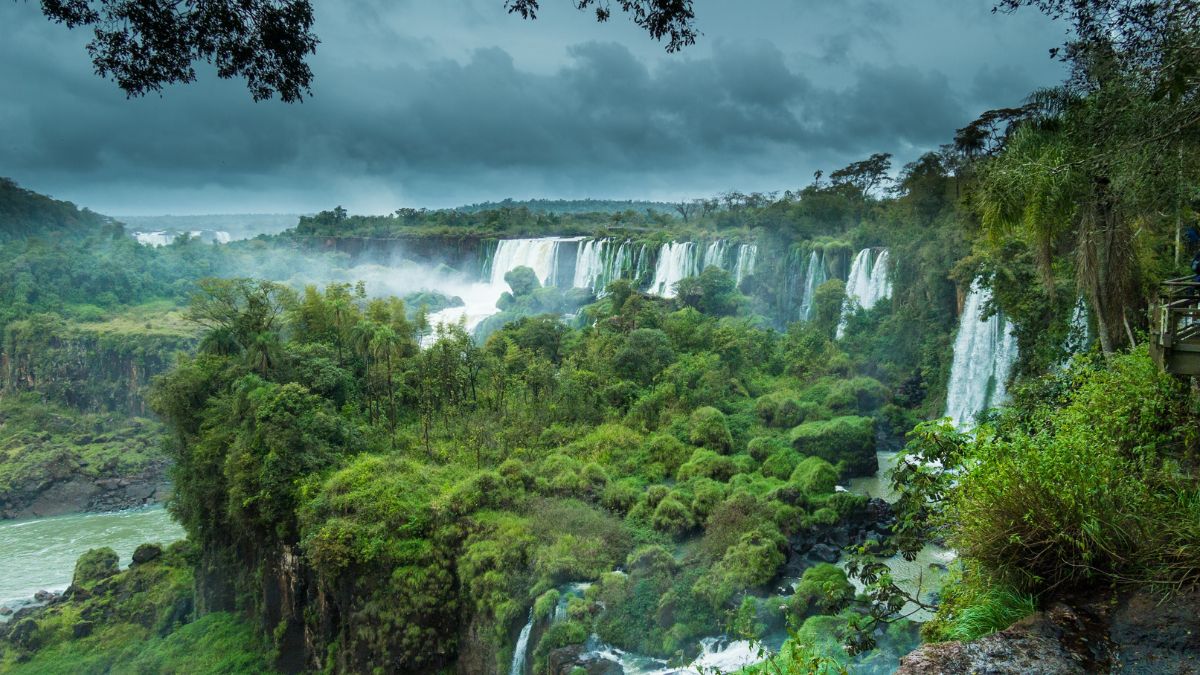
Iguazu Falls, straddling the border of Argentina and Brazil, offers a natural spectacle that can compete with the best of Costa Rica’s waterfalls. With its 275 individual drops, Iguazu Falls is one of the world’s most impressive waterfall systems.
The surrounding rainforest teems with diverse wildlife, including capuchin monkeys, toucans, and the elusive jaguar. This combination of natural beauty and rich biodiversity resonates with the experiences found in Costa Rica. Both destinations offer awe-inspiring landscapes, abundant wildlife, and a commitment to preserving these natural wonders, making Iguazu Falls a thrilling alternative to Costa Rica.
Los Nevados National Natural Park, Colombia
Los Nevados National Natural Park in Colombia, with its towering volcanoes, snow-capped peaks, and unique páramo ecosystems, provides a striking contrast to Costa Rica’s tropical landscapes. The park’s biodiversity, however, with its many endemic species, aligns with Costa Rica’s ecological richness.
Adventures in Los Nevados, such as hiking up its volcanoes and exploring its unique flora and fauna, offer experiences akin to trekking in Costa Rica’s national parks. Both destinations share a commitment to preserving their unique environments and biodiversity, making Los Nevados a unique and high-altitude alternative to Costa Rica.
Pantanal, Brazil
The Pantanal in Brazil, the world’s largest tropical wetland area, offers an array of wildlife experiences that can rival those of Costa Rica. Home to jaguars, capybaras, anacondas, and a dazzling variety of bird species, the Pantanal’s biodiversity is truly remarkable.
Like Costa Rica, the Pantanal is a treasure trove for nature lovers, with guided safaris offering close encounters with the diverse wildlife. Both regions place a significant emphasis on preserving their unique ecosystems and promoting eco-friendly tourism. While the landscapes differ, the shared ethos of conservation and rich biodiversity make the Pantanal an exciting alternative to Costa Rica.
Places Like Costa Rica In The Caribbean
The Caribbean islands offer a range of destinations that capture aspects of Costa Rica’s natural and cultural charm. El Yunque National Forest in Puerto Rico and Morne Trois Pitons National Park in Dominica reflect the region’s lush landscapes and rich biodiversity.
Cuba’s Guanahacabibes Peninsula, the Tobago Cays in St. Vincent and The Grenadines, and The Baths on Virgin Gorda in the British Virgin Islands offer unique coastal experiences that can rival Costa Rica’s beach destinations. These Caribbean locales each encapsulate a facet of Costa Rica’s natural allure, commitment to conservation, and spirit of adventure.
El Yunque National Forest, Puerto Rico
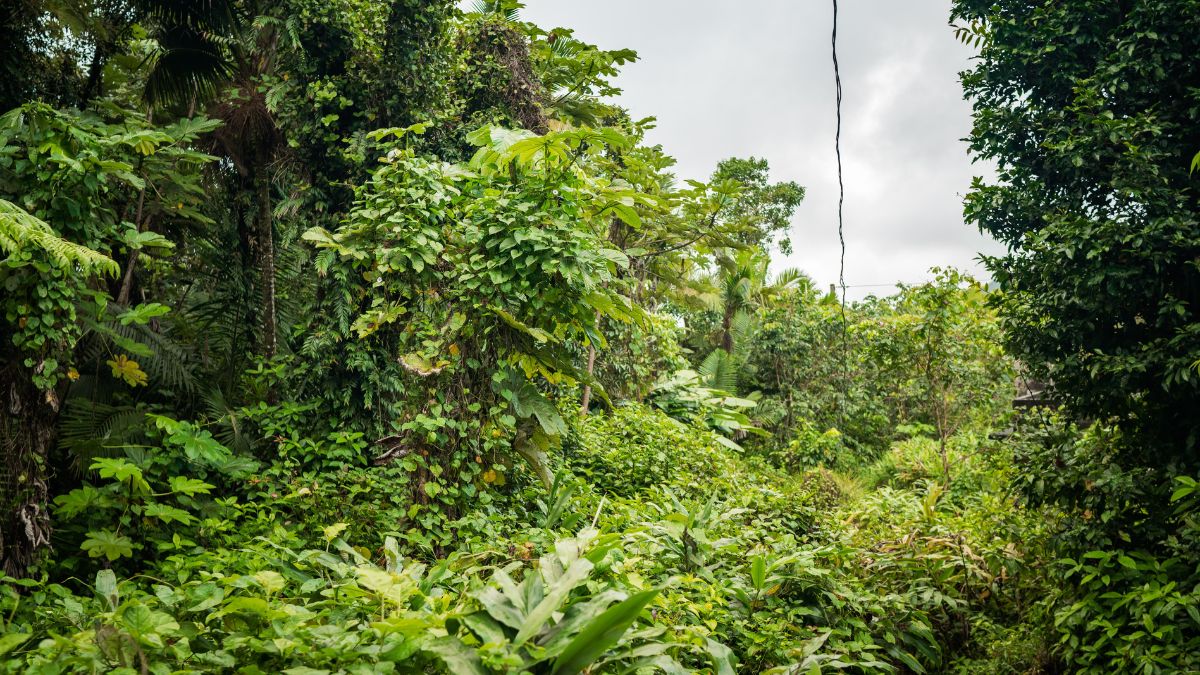
El Yunque National Forest in Puerto Rico shares Costa Rica’s lush tropical scenery and rich biodiversity. As the only tropical rainforest in the U.S. National Forest System, El Yunque offers a distinct Caribbean flavor that mirrors Costa Rica’s verdant landscapes.
Hosting an array of unique species, including the Puerto Rican parrot and the Coqui frog, El Yunque presents opportunities for wildlife spotting and nature exploration akin to Costa Rica’s reserves. The forest’s waterfalls, hiking trails, and panoramic views enhance its appeal as a natural playground. Like Costa Rica, El Yunque emphasizes environmental conservation and sustainable tourism, making it a captivating alternative in the Caribbean.
Morne Trois Pitons National Park, Dominica
Morne Trois Pitons National Park in Dominica offers an enticing blend of natural features that can rival Costa Rica’s diversity. The park, a UNESCO World Heritage Site, boasts lush rainforests, stunning waterfalls, volcanic features, and unique wildlife.
With activities like hiking, bird watching, and exploring natural hot springs, Morne Trois Pitons echoes the outdoor adventure spirit of Costa Rica. Both destinations share a commitment to preserving their unique natural environments and promoting sustainable tourism. The varied landscapes and rich biodiversity make Morne Trois Pitons a fascinating Caribbean alternative to Costa Rica.
Guanahacabibes Peninsula, Cuba
Guanahacabibes Peninsula in Cuba offers a blend of unspoiled beaches and diverse ecosystems that mirror Costa Rica’s coastal and forest landscapes. Known for its clear waters, abundant marine life, and lush forests, the Guanahacabibes Peninsula is a UNESCO Biosphere Reserve.
Snorkeling and diving here can be as thrilling as exploring the underwater world off Costa Rica’s shores. Additionally, the peninsula’s forests host a range of bird species, mirroring Costa Rica’s birdwatching opportunities. Both destinations prioritize the preservation of their unique ecosystems, making Guanahacabibes Peninsula an enticing alternative to Costa Rica.
Tobago Cays, St. Vincent and The Grenadines
The Tobago Cays in St. Vincent and The Grenadines offer a marine paradise that rivals Costa Rica’s beach destinations. Known for their turquoise waters, vibrant coral reefs, and diverse marine life, the Tobago Cays are a protected marine park in the heart of the Caribbean.
The snorkeling and diving experiences in the Tobago Cays can be as enticing as those in Costa Rica’s Pacific and Caribbean coasts. The cays also host sea turtles and a variety of bird species, adding to their biodiversity. The shared commitment to marine conservation and sustainable tourism practices make the Tobago Cays a captivating Caribbean alternative to Costa Rica.
The Baths, Virgin Gorda, British Virgin Islands
The Baths on Virgin Gorda in the British Virgin Islands offer a unique geological attraction that can complement Costa Rica’s natural wonders. Known for its enormous granite boulders creating sea-filled grottoes and tunnels, The Baths provide a distinct beach experience.
While Costa Rica is famed for its lush rainforests and wildlife, The Baths offer a contrasting landscape that still encourages exploration and adventure, with opportunities for snorkeling, swimming, and hiking. Despite the differences, both destinations promote the protection of their unique natural attractions, making The Baths an intriguing and contrasting alternative to Costa Rica.

